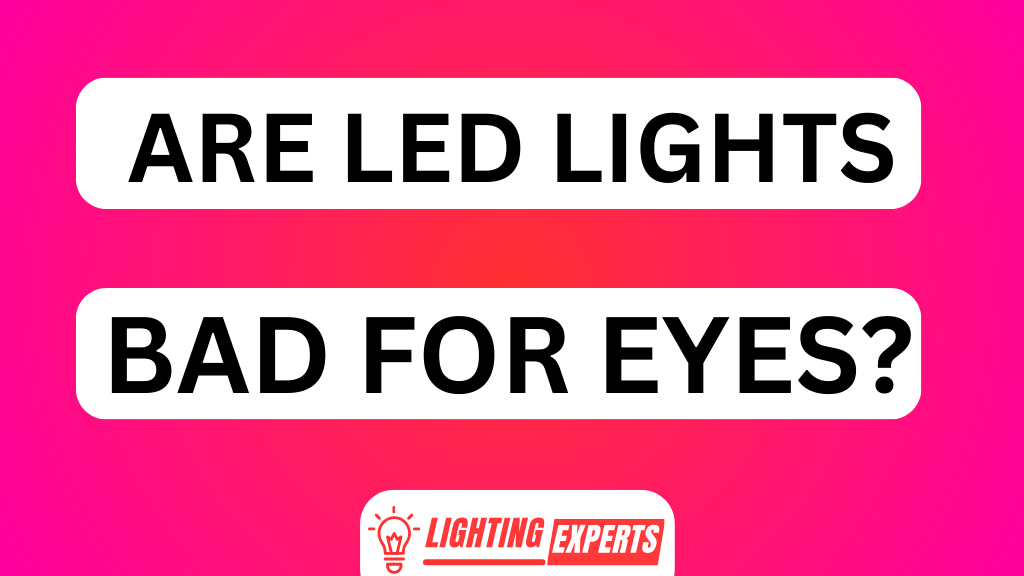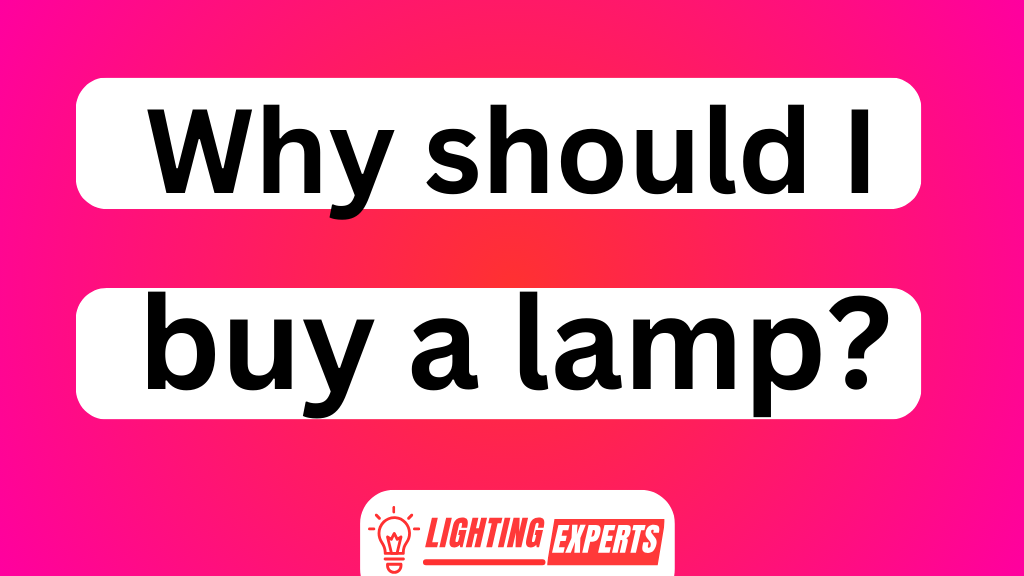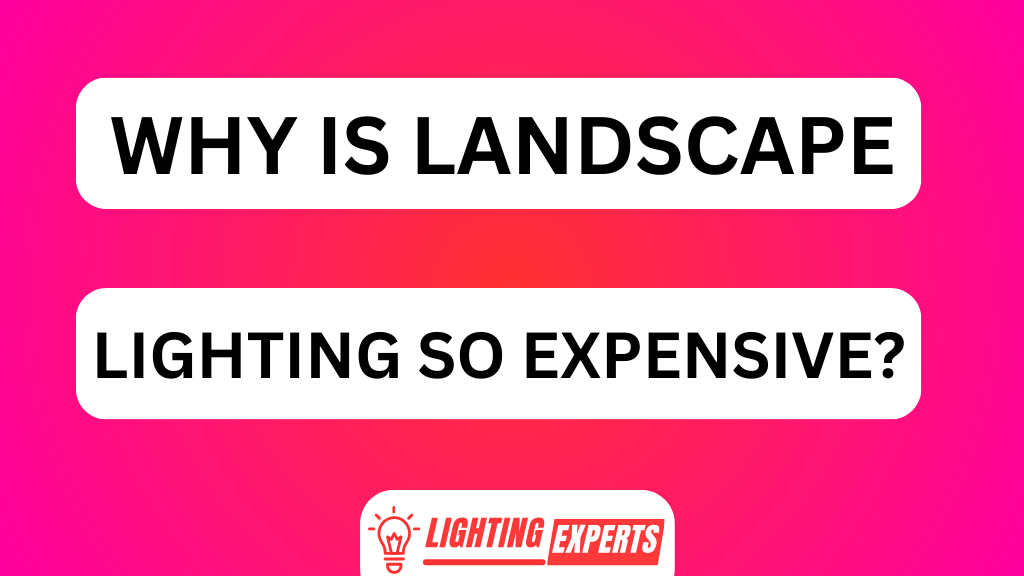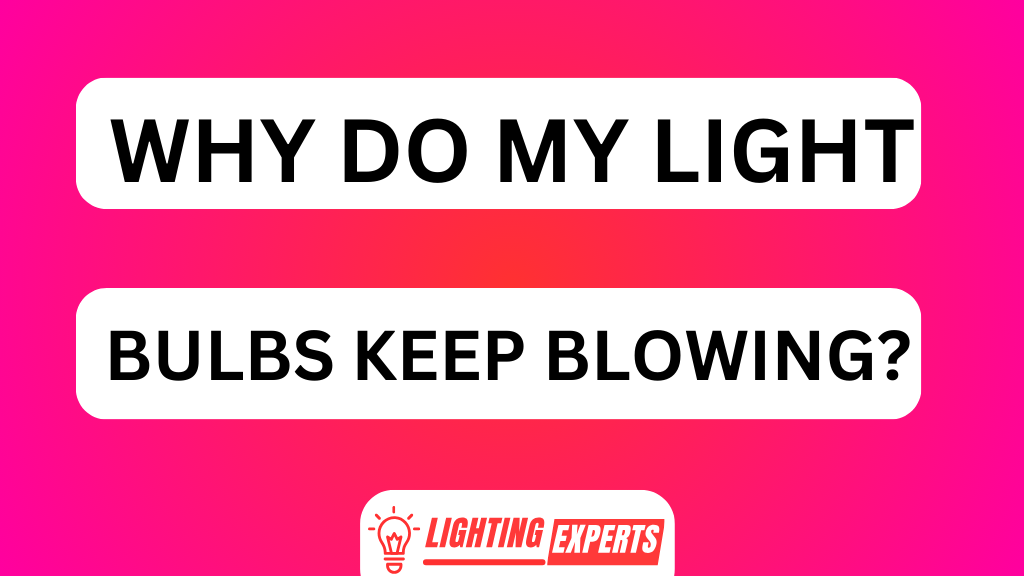Have you ever wondered if LED lights are harmful to our eyes? Well, let us shed some light on the subject.
In this article, we will explore the science behind LED lights and their impact on eye health. We’ll delve into the effects of blue light on the eyes, common eye problems caused by LED lights, and provide tips for minimizing eye strain.
Join us as we debunk myths and separate fact from fiction about LED lights and their effect on our precious peepers. Plus, we’ll offer guidance on choosing eye-friendly LED lights and promoting healthy eye habits in this age of illumination.
Key Takeaways ARE LED LIGHTS BAD FOR EYES
- LED lights emit blue light, which can suppress melatonin production and disrupt sleep patterns.
- Prolonged exposure to blue light from LED lights may potentially cause retinal damage and eye problems such as dryness and fatigue.
- Protective measures such as using blue light filters, reducing screen time before bed, and adjusting lighting environment can safeguard against excessive blue light exposure.
- While there is limited evidence of significant adverse effects on eye health from LED lights, it is recommended to choose warm white or soft white LED bulbs with color temperatures below 3000K and to wear blue light-blocking glasses to reduce blue light exposure.
The Science Behind LED Lights and Eye Health
LED lights have raised concerns about their impact on eye health. People often question how the blue light emitted by LED lights affects our eyes and vision. Blue light is known to suppress melatonin production, disrupting our sleep-wake cycle. Exposure to blue light before bedtime has been linked to poor sleep quality and difficulty falling asleep.
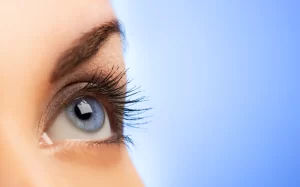
However, research on the long-term effects of blue light on vision is still ongoing. Some studies suggest that prolonged exposure to blue light may cause retinal damage and increase the risk of developing age-related macular degeneration (AMD). Yet, further research is needed to fully comprehend these potential risks.
To safeguard our eyes from excessive blue light exposure, it is important to use filters or reduce screen time before bed.
Understanding the Effects of Blue Light on the Eyes
In this discussion, we will explore the effects of blue light on the eyes and how to prevent eye strain caused by prolonged exposure.

Blue light, emitted by digital screens and LED lights, can potentially lead to a range of eye problems such as dryness, fatigue, and even long-term damage.
However, there are protective measures recommended to mitigate these risks. These include using blue light filters, taking regular breaks from screen time, and adjusting the lighting environment for optimal visual comfort.
Blue Light Exposure
You should be aware that prolonged exposure to blue light emitted by electronic devices can potentially harm your eyes. Blue light, which is a high-energy visible (HEV) light, is known to penetrate deep into the eye and may cause damage to the retina over time.
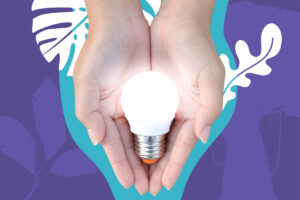
To protect our eyes from these long-term effects, it’s important to take measures such as using blue light filters on our devices. These filters help reduce the amount of blue light reaching our eyes, minimizing the risk of potential damage. Additionally, practicing good screen habits like taking regular breaks and maintaining proper distance from screens can also help prevent excessive exposure to blue light. By being mindful of our digital habits and implementing these strategies, we can minimize the potential harm caused by prolonged blue light exposure and ensure better eye health in the long run.
| Column 1 | Column 2 | Column 3 |
|---|---|---|
| Prolonged exposure to blue light | Can potentially harm your eyes | |
| Blue light filters | Help reduce the amount of blue light reaching your eyes | |
| Good screen habits | Can prevent excessive exposure to blue light |
In order to further protect our eyes and prevent discomfort while using electronic devices, let’s explore some effective strategies for preventing eye strain.
Eye Strain Prevention
To prevent eye strain while using electronic devices, it’s crucial for us to practice proper screen habits and take regular breaks. Eye strain is a common problem that occurs due to prolonged screen time. It can lead to symptoms such as dry eyes, blurred vision, headaches, and fatigue.
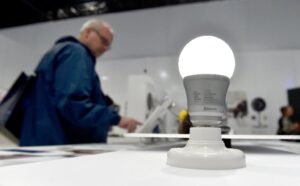
One effective way to combat eye strain is by incorporating eye exercises into our daily routine. These exercises help relax the eye muscles and reduce tension. Additionally, limiting our screen time and taking frequent breaks can also alleviate eye strain.
Experts recommend following the 20-20-20 rule: every 20 minutes, look away from the screen at an object 20 feet away for at least 20 seconds. By practicing these habits and incorporating regular breaks into our screen time, we can significantly reduce the risk of developing eye strain.
Protective Measures Recommended
One effective way to combat eye strain is by incorporating eye exercises into our daily routine, which can help relax the eye muscles and reduce tension.
In addition to these exercises, there are other protective measures that we can take to safeguard our eyes from strain and potential damage. Here are four recommended measures:
- Wear protective eyewear: When engaging in activities that may expose our eyes to potential harm, such as playing sports or working with hazardous materials, it is crucial to wear appropriate protective eyewear. This can help shield our eyes from injuries and reduce the risk of long-term complications.
- Reduce screen time: Excessive screen time has been linked to increased eye strain and discomfort. To minimize these effects, it is advisable to limit the amount of time spent staring at screens, take regular breaks, and practice the 20-20-20 rule (looking at something 20 feet away for 20 seconds every 20 minutes).
- Adjust screen settings: Proper adjustment of screen brightness and contrast levels can significantly alleviate eye strain. It is recommended to set the display brightness at a comfortable level that matches the surrounding lighting conditions.
- Maintain proper posture: Sitting too close or too far from screens can strain our eyes. Maintaining an optimal viewing distance of about arm’s length (approximately 25 inches) and ensuring good posture while using electronic devices helps promote healthier visual habits.
Common Eye Problems Caused by LED Lights
Eye strain from LED lights and blue light exposure are common concerns that many people experience in today’s digital age.
As we spend more time in front of screens, such as computers, smartphones, and tablets, our eyes are constantly exposed to the high-intensity blue light emitted by these devices.
This prolonged exposure can lead to symptoms such as dry eyes, blurred vision, headaches, and even disrupted sleep patterns.
Eye Strain From Leds
LED lights can cause eye strain if used for extended periods of time. This is because they emit a high amount of blue light, which can be harmful to our eyes. To help you understand the impact of prolonged LED light exposure on your eyes, here are four visualizations:
- Imagine staring at a bright LED screen for hours without breaks. Your eyes may start to feel dry and tired, causing discomfort.
- Picture the harsh glare from an overhead LED light fixture directly hitting your eyes, making it difficult to concentrate and causing headaches.
- Visualize the constant exposure to blue light from LEDs disrupting your sleep patterns, leading to fatigue and irritability during the day.
- Think about not using any blue light filters on your devices or wearing protective eyewear while using LED lights, increasing the risk of long-term eye damage.
To prevent eye strain from LEDs, consider using blue light filters and scheduling regular eye exams with an optometrist to monitor your eye health proactively.
Blue Light Exposure
Excessive exposure to blue light emitted by electronic devices can lead to sleep disruptions and increased irritability during the day. Blue light, which is found in sunlight as well as electronic screens, has been shown to suppress the production of melatonin, a hormone that regulates our sleep-wake cycle. This can make it harder for us to fall asleep at night and result in poorer quality sleep overall.
Long-term effects of blue light exposure on sleep have also been studied. Research suggests that chronic exposure to blue light may disrupt our natural circadian rhythm, leading to long-lasting sleep problems. In addition, inadequate or disrupted sleep has been associated with a range of negative health outcomes, including an increased risk of obesity, diabetes, and cardiovascular disease.
To mitigate the effects of blue light on sleep, experts recommend limiting screen time before bed and using apps or filters that reduce blue light emissions from electronic devices. Additionally, creating a dark and quiet sleeping environment can promote better quality sleep.
Tips for Minimizing Eye Strain From LED Lights
To minimize eye strain from LED lights, you should try adjusting the brightness levels. Here are four tips to help you reduce eye strain and promote visual comfort:
- Dimming the lights: Lowering the brightness of your LED lights can reduce the intensity of light entering your eyes, making it easier for them to adjust and reducing strain.
- Using warm light: Opt for LED lights with a warmer color temperature (around 2700K to 3000K) rather than cooler ones. Warm light is soothing to our eyes and mimics natural sunlight, creating a more comfortable environment.
- Proper positioning: Position your LED lights in a way that they don’t directly shine into your eyes or create glare on reflective surfaces like computer screens or glossy paper.
- Taking breaks: Remember to give your eyes regular breaks by looking away from screens and focusing on distant objects every 20 minutes or so. This helps relax eye muscles and prevent fatigue.
Debunking Myths: Separating Fact From Fiction About LED Lights and Eye Health
In our previous subtopic, we discussed tips for minimizing eye strain caused by LED lights. Now, let’s debunk some myths and separate fact from fiction regarding LED lights and their impact on eye health.
One common concern is the belief that blue light emitted by LEDs can disrupt sleep patterns. While it is true that exposure to blue light before bed can affect melatonin production and make it harder to fall asleep, this is not exclusive to LED lights. In fact, electronic devices like smartphones and tablets emit more blue light than LEDs.
Furthermore, there is limited evidence suggesting that long-term exposure to blue light from LED lights has any significant adverse effects on eye health. The American Academy of Ophthalmology states that the amount of blue light emitted by LEDs is relatively low compared to other sources, such as sunlight.
Transitioning into the subsequent section about ‘how to choose LED lights that are eye-friendly,’ let’s explore some practical guidelines for selecting LED lighting options that prioritize eye health.
How to Choose LED Lights That Are Eye-Friendly
When it comes to selecting eye-friendly options, you should consider the color temperature of the lighting. Here are four key factors to consider when choosing appropriate lighting and minimizing the impact of LED lights on sleep patterns:
- Opt for warm white or soft white LED bulbs with a color temperature below 3000K. This mimics natural daylight and creates a soothing ambiance.
- Avoid cool white or daylight LED bulbs with color temperatures above 4000K as they emit blue light that can disrupt your body’s natural sleep-wake cycle.
- Look for LEDs labeled ‘low blue light’ or ‘circadian-friendly.’ These bulbs have reduced blue light emissions, making them less likely to interfere with melatonin production and sleep quality.
- Use dimmers or adjustable fixtures to control the intensity of LED lights in different environments, allowing you to customize the lighting based on your needs and time of day.
Promoting Healthy Eye Habits in the Age of LED Lights
One way to maintain healthy eyes in the age of LED lights is by following proper eye care practices. LED lights emit blue light, which can cause digital eye strain and potentially harm our eyes if we’re not careful.
To protect our eyes, it’s important to limit screen time and take frequent breaks when using electronic devices. Additionally, wearing blue light-blocking glasses can help reduce the amount of blue light that reaches our eyes.
It’s also crucial to maintain good lighting conditions in our surroundings. This can be achieved by using appropriate lighting fixtures and avoiding glare from screens or other sources.
Frequently Asked Questions
How Do LED Lights Compare to Other Types of Lighting in Terms of Eye Health?
LED lights are often compared to traditional lighting for their impact on eye health. One concern is the blue light emitted by LEDs, which some research suggests may contribute to eyestrain and sleep disturbances.
Are There Any Long-Term Effects of Prolonged Exposure to LED Lights on Eye Health?
Prolonged exposure to LED lights can have long-term effects on eye health. Blue light emitted by LEDs can disrupt sleep patterns and suppress melatonin production, potentially leading to sleep disorders and other health issues.
Can LED Lights Cause Permanent Damage to the Eyes?
LED lights can indeed cause some damage to the eyes if exposed for prolonged periods. It’s important to be cautious and take breaks from staring at screens, as the potential risks of LED light exposure on eye health are real.
Are There Any Specific Groups of People Who Are More Susceptible to Eye Problems Caused by LED Lights?
Groups at risk for eye problems caused by LED lights include individuals with pre-existing eye conditions, such as cataracts or macular degeneration. Prevention measures, like reducing screen time and using blue light filters, can help protect their eyes.
Is It Necessary to Wear Protective Eyewear When Using LED Lights?
Wearing protective eyewear when using LED lights isn’t necessary. Blue light emitted by LEDs can strain our eyes, but there’s no conclusive evidence that protective eyewear is effective in preventing long-term damage.
Conclusion
Overall, it’s clear that LED lights can have a significant impact on our eye health. The science behind the effects of blue light on our eyes is well-documented. Common eye problems such as dryness and strain are often associated with prolonged exposure to these lights.
However, by following some simple tips and choosing eye-friendly LED lights, we can minimize the negative effects on our vision. It’s time to shed light on the importance of healthy eye habits in this age of bright LEDs. Let’s illuminate our path towards optimal eye health.
